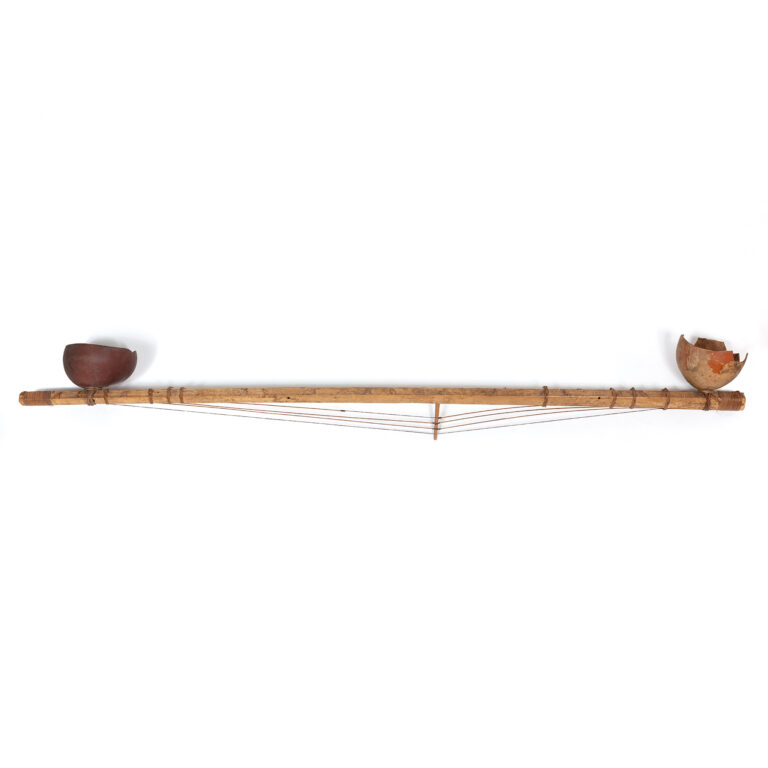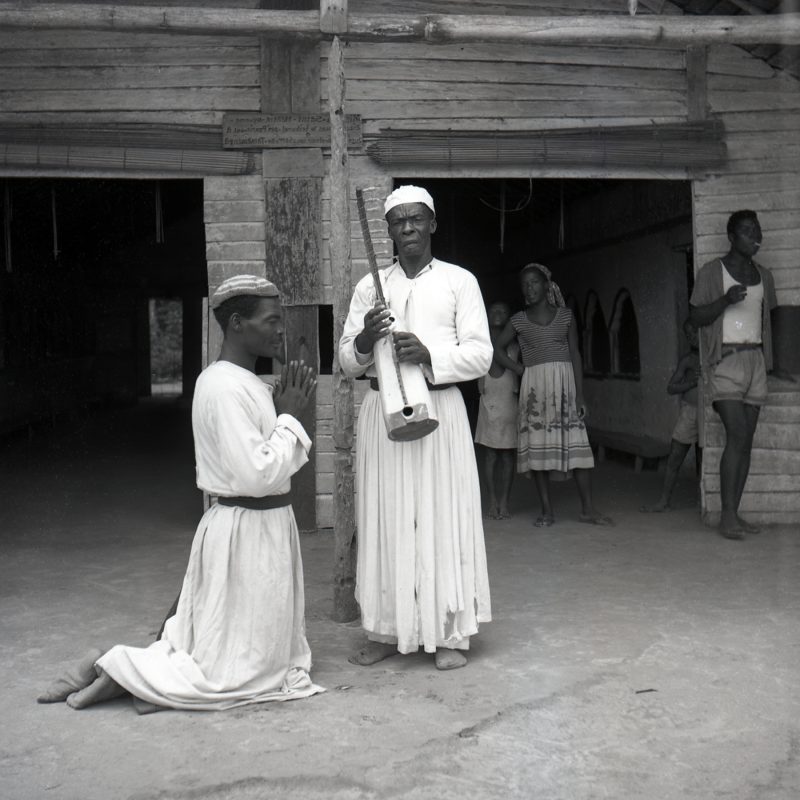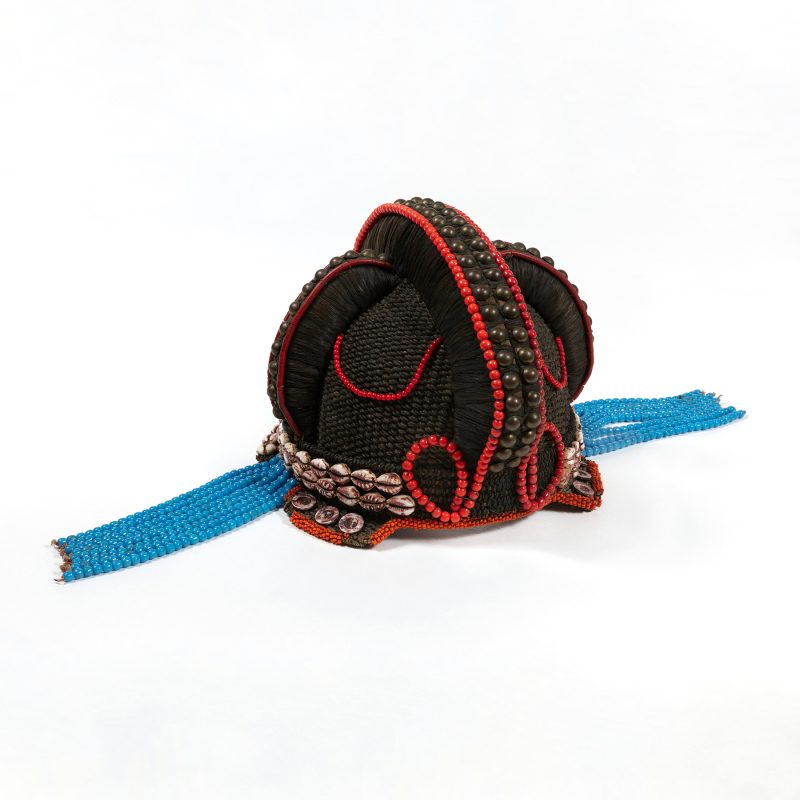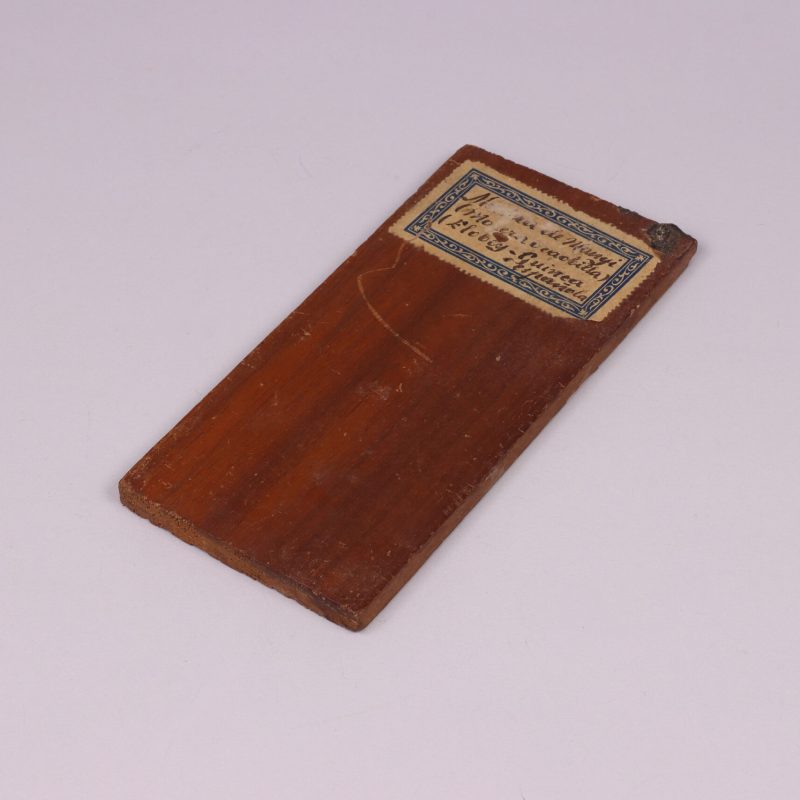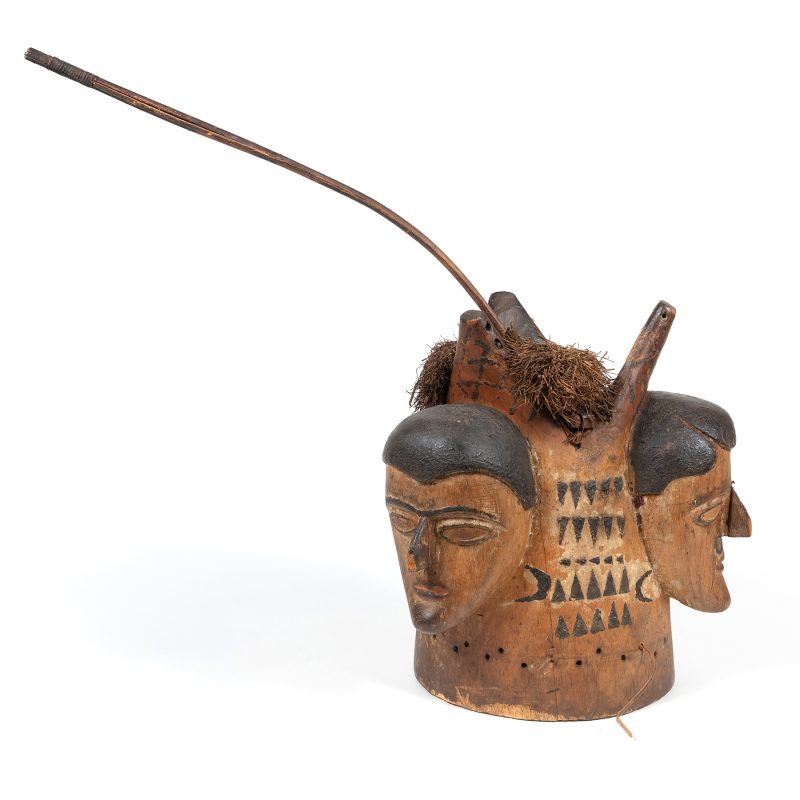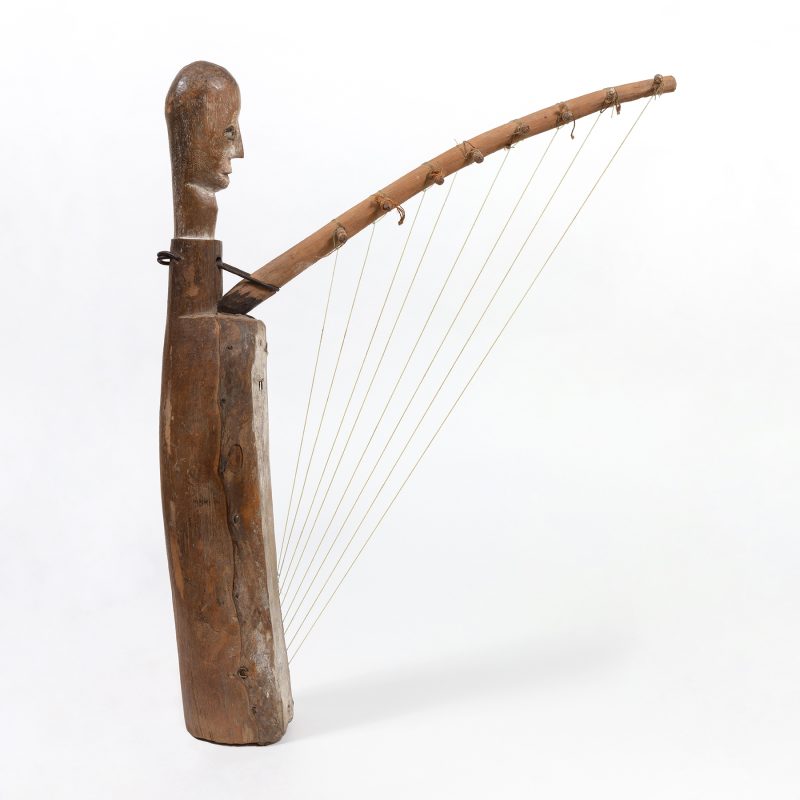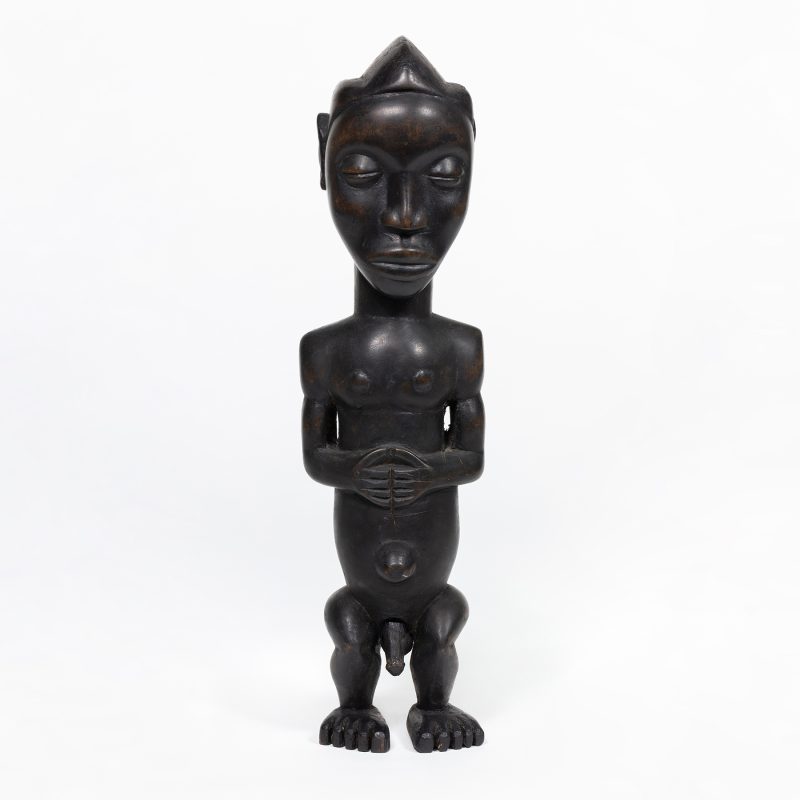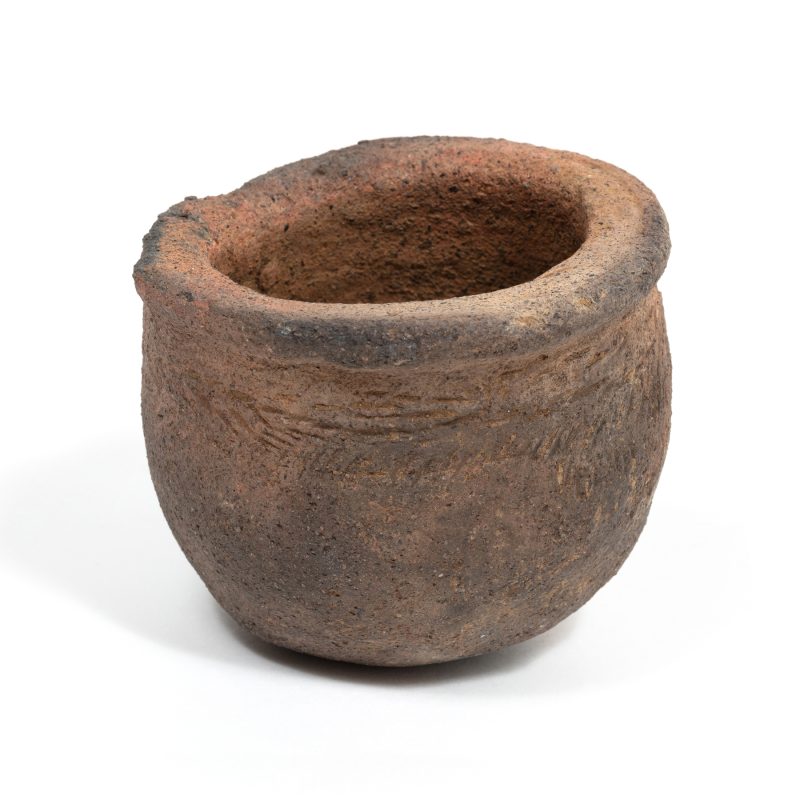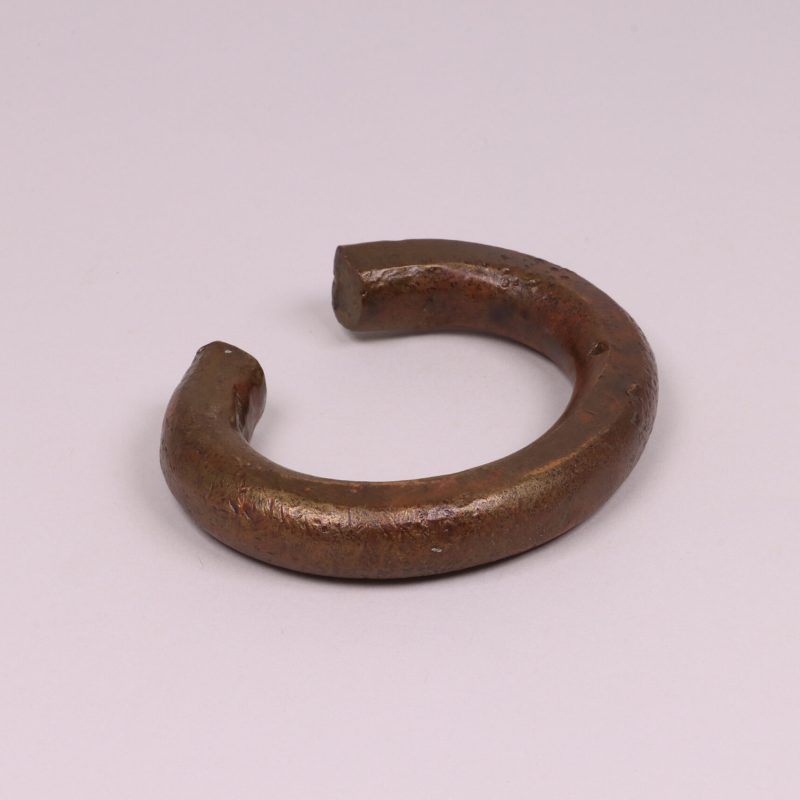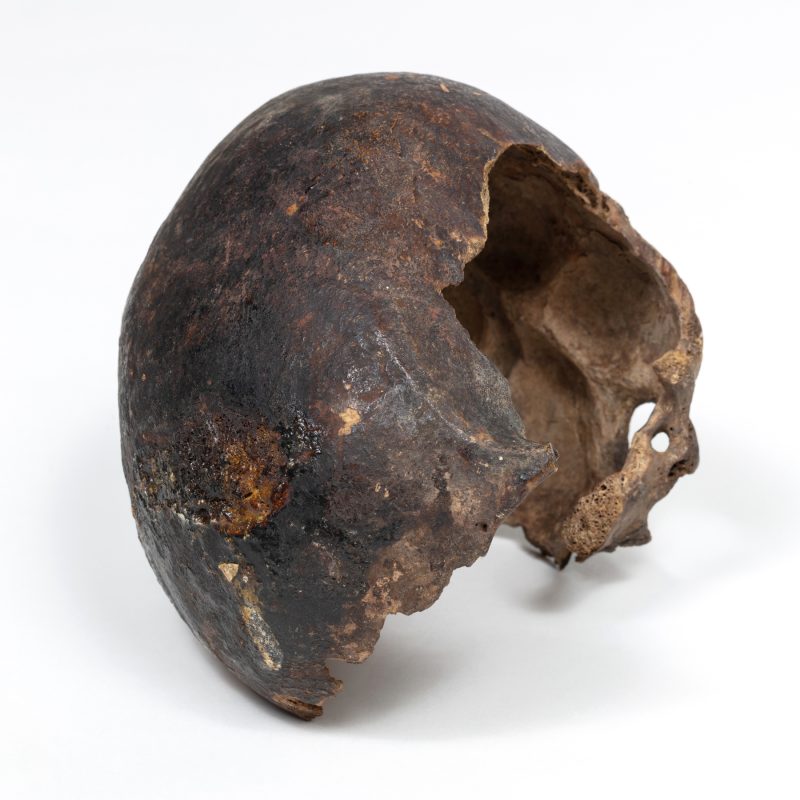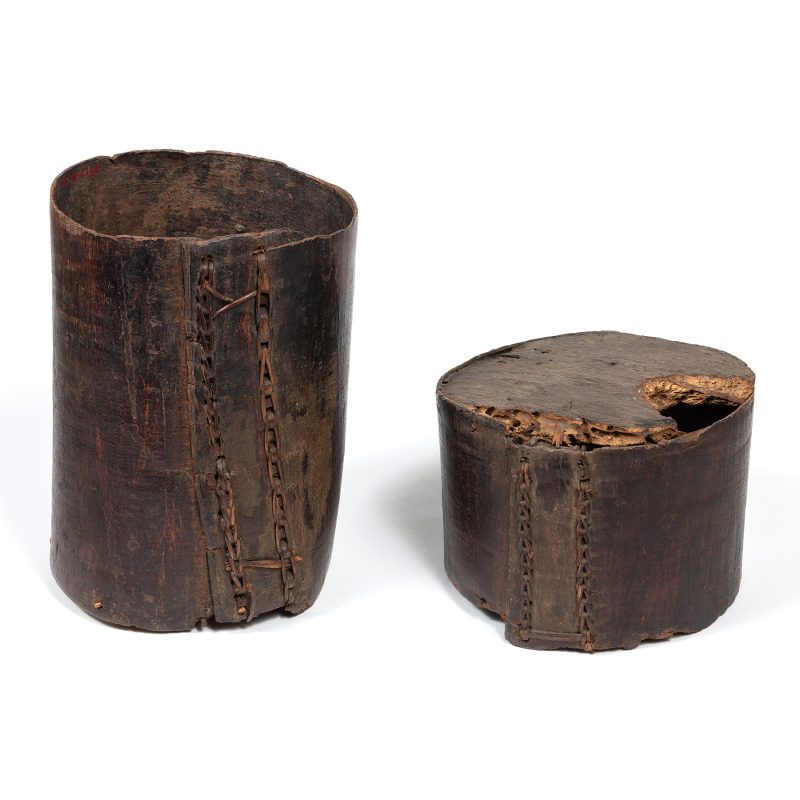Summary of results
This is a stringed musical instrument called nvet in Fang. It is made from two gourds, one of which is already broken. Although it is not the best-preserved instrument in the collection, it may be of interest within its category. It may have been purchased already broken or in poor condition. Typically, this type of instrument has at least one gourd acting as a resonator in the centre, which is usually rested against the player’s chest. While it is sometimes played as a solo instrument, it is often used to accompany Nvet Oyeng, a lyrical genre widely spread across the Fang region (Equatorial Guinea, Cameroon, and Gabon) and performed by artists of great international renown.
This instrument is part of a deposit of 272 pieces made by the entomologist Joaquim Mateu Sanpere at the Museu Etnològic i Colonial de Barcelona in January 1949. Mateu Sanpere was a member of the zoology section of the expedition organised by the Institute of African Studies (IDEA) of the Spanish National Research Council (CSIC) to former Spanish Guinea during the summer of 1948. He remained there until November of that year, after his expedition colleagues had already returned to the metropole.
Chronological reconstruction of provenance
Regarding the arrival of the chordophone at the museum, the current inventory records it as part of a deposit of 272 pieces made by Joaquim Mateu Sanpere in January 1949. The exact date of the instrument’s manufacture is unknown, so the only inference that can be made is that it was produced before 1948.
The precise provenance of the piece remains unclear, as the original inventory in which Joaquim Mateu would have recorded its exact acquisition location has not yet been found. However, this information is believed to have existed, as a letter from August Panyella requesting the list from Joaquim Mateu has been located (Panyella-Amil Archive).
Additionally, another list exists containing details about the pieces collected by Mateu on the same journey, which were sent to Madrid in 1958 to become part of the Museo de África. From this list, it can be deduced that Mateu visited the northern coast of the Continental Region of Equatorial Guinea (formerly Rio Muni), made a stop in the village of Ayamiken, and travelled to the southern part of the country, collecting items from the area considered Fang Okak. This includes villages along the road from Evinayong to Nsork via Akurenam, as well as from Evinayong to Akonibe and Engong.
The chordophone, therefore, may originate from this southern and inland area of Rio Muni (now the Continental Region, specifically Centro Sur Province and part of Wele-Nzas) (MNA – Folder 8. Museum of Africa File. Directorate-General of African Territories and Provinces).
Estimation of provenance
Although it cannot be stated definitively, it can be estimated that the nvet was acquired in the central-southern area of the Continental Region of present-day Equatorial Guinea, likely in one of the villages along the road from Evinayong to Nsork.
Possible alternative classifications
Es recomana fer constar l’estimació de la procedència, zona centre-sud de l’actual Regió Continental de Guinea Ecuatorial; els materials amb que està fet, canya i cordes; i el nom en fang de l’objecte: nvet.
It is recommended to include the estimated provenance of the instrument, (the central-southern area of the present-day Continental Region of Equatorial Guinea), the materials used in its construction (cane and strings), and its name in Fang: nvet.
Complementary sources
Archives:
Arxiu del Museu Etnològic i de les Cultures del Món – MEB 128-01: Expedient de l’expedició a Guinea realitzada l’any 1948. 478 ítems, 14 carpetes.
Arxiu del Museo Nacional de Antropologia – Expediente del Museo de África. Dirección General de Plazas y Provincias Africanas. Carpetes 2 a 9.
Arxiu Panyella-Amil
Bibliography:
Alcobé Noguer, S. (1949). Una expedición científica a los territorios españoles del Golfo de Guinea. Archivos del IDEA, III, 10, 25-33.
Alcobé Noguer, S. (1955). Informe de la labor realizada por la expedición científica a los Territorios españoles del Golfo de Guinea, organizada por la Dirección General de Marruecos y Colonias. Archivos del IDEA, VIII, 32, 85-95.
Aranzadi, I. (2006). Instrumentos musicales de las etnias de Guinea Ecuatorial. Madrid: Apadena.
Aranzadi, J. (2021). Estereotipos étnicos de los indígenas en los primeros estudios coloniales sobre la Guinea Española (1900-1936). Dins Bérose: Encyclopédie internationale des histoires de l’anthropologie. París: Bérose. <https://www.berose.fr/article2347.html?lang=f>.
Calvo i Calvo, L. (2021). Sociedad, política y ciencia en la museografía española del siglo XX: El Museo Etnológico de Barcelona como estudio de caso. Aula, Museos y Colecciones, (8), 13-25.
Calvo Calvo, L. (2023). Anthropology and image in colonial contexts: The scientific expedition to Spanish territories in the Gulf of Guinea (1948). Culture & History Digital Journal, 12(1). <https://doi.org/10.3989/chdj.2023.002>.
Okenve, E. (2007). Equatorial Guinea 1927-1979: A new African tradition (tesi doctoral). SOAS University of London. <https://doi.org/10.25501/SOAS.00029238>.
Nerín, G. (2008). Un guardia civil en la selva. Barcelona: Ariel.
Veciana Vilaldach, A. (1956). Contribución al estudio antropológico del negro africano: los bujeba (bisió) de la Guinea Española. Madrid: CSIC-IDEA.

